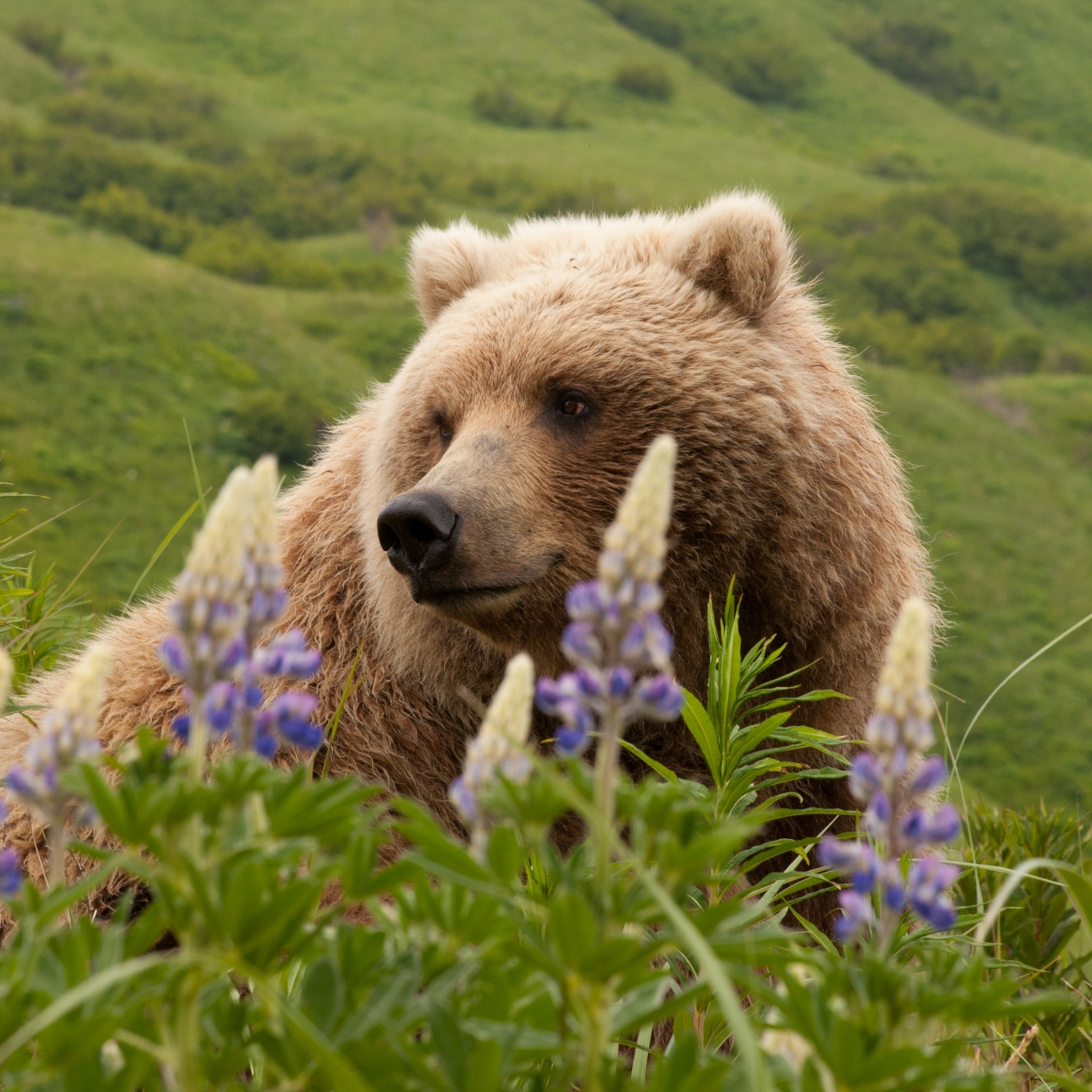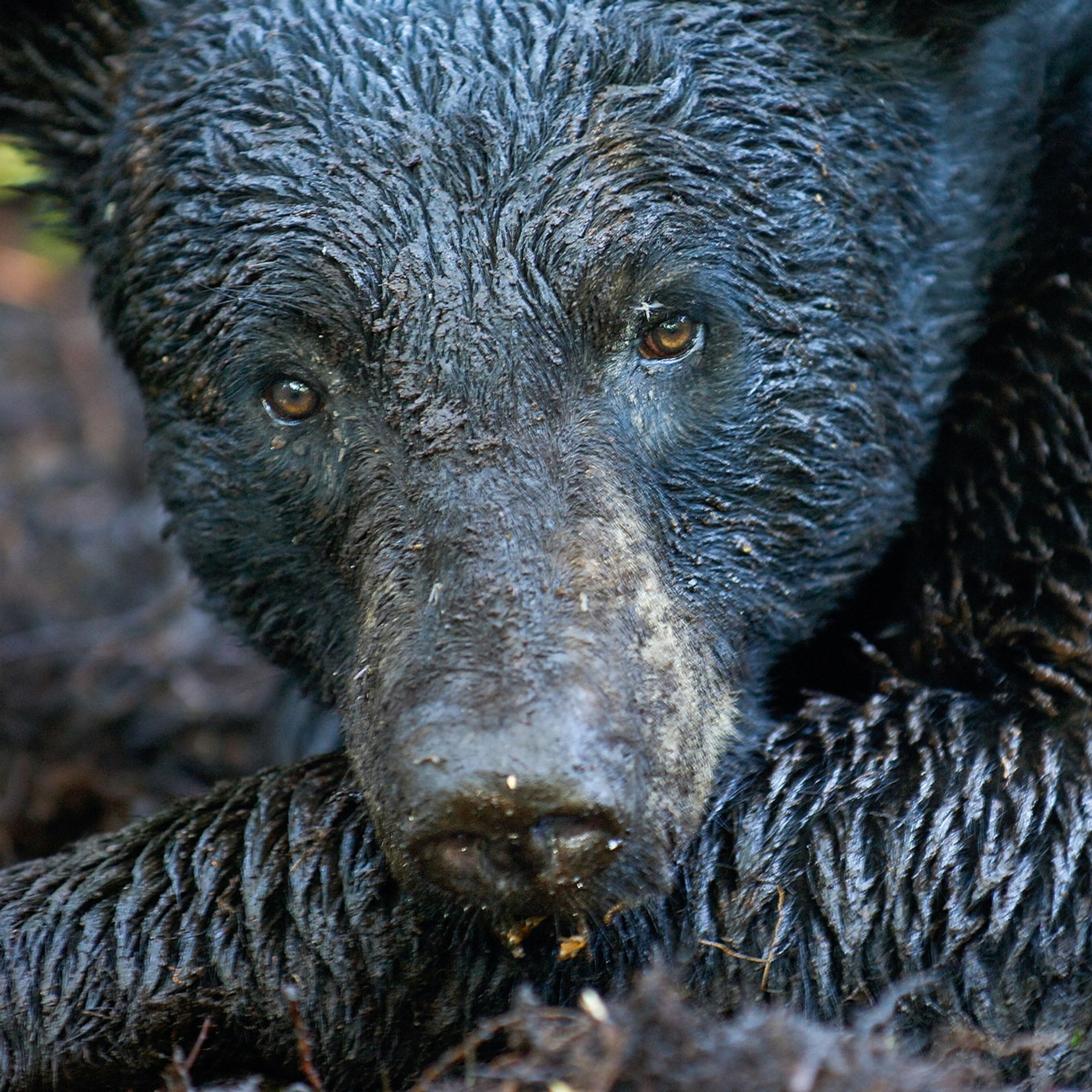
Famous Bear Cub Killed in Hit and Run in National Park
The bear known as 399 tried to save her cub, which the public called Snowy, in Grand Teton.
The first official day of summer dawned with tragedy in Grand Teton National Park Monday as news of the death of the lone cub of world-famous Grizzly 399 spread. The cub was struck and killed by a car Sunday night, in an incident that rangers are investigating as a possible hit-and-run.
The popular cub, given the nickname “Snowy” by wildlife watchers for the whitish-blonde coloration of his face, was struck not far from the Pilgrim Creek drainage, which the youngster’s mother frequents as part of her vast home range. Grizzly 399, known to wild bear fans around the world, turned 20 years old last winter.
In fact, 399’s innumerable admirers waited with anxious expectation this spring to see if she would again emerge from the den after a Wyoming man claimed to have illegally killed her out of spite in autumn 2015. When 399 finally appeared near the flanks of Pilgrim Creek with the single cub at her side, it only fueled her mystique and legend.
As reports circulated early Monday that Snowy had been fatally struck by a vehicle—and those who arrived on the scene Monday morning said that 399 had frantically tried to attend to her injured offspring—sorrow and anger spread equally as fast on social media.
Grizzly bears in the Greater Yellowstone region are currently protected federally as a threatened species. In 1975, they were added to the federal Endangered Species Act as the bear population in America’s most iconic wild ecosystem was in free-fall, tumbling to an estimated 136 individuals.
The last four decades have reversed the decline, thanks to strict rules on habitat protection, harsh penalties meted out to poachers, phase-out of livestock grazing allotments on public lands, tough trash disposal regulations, and programs that emphasize coexistence between humans and bruins.
Today, estimates of the number of grizzlies in the 22.5-million acre Greater Yellowstone area (which includes Yellowstone and Grand Teton National Parks) range from between 600 and upwards of a thousand, the latter fiercely disputed by some environmental groups and independent scientists.
Thirty-seven large animals are known to have been killed on Grand Teton's roads this year, reports the park service. More than one hundred are typically killed each year.
Famous Bear
Grizzly 399 is not only ancient in bruin years but considered a symbol for the challenges facing the survival of her species. Born as a cub in 1996, 399 was given the numeric identity by researchers with the Interagency Grizzly Bear Study Team, who outfitted her with a radio collar to track her movements.
Early in this new millennium, she mothered a single cub but that newborn disappeared, speculation being that it was attacked and possibly eaten by a male grizzly.
Grizzly 399 soon attracted a huge following when, in the following years, she began frequenting the roadsides in Grand Teton National Park, accompanied by a band of eminently photogenic triplet cubs. In mid June 2007, she defensively mauled a hiker in Grand Teton after the man accidently stumbled upon an elk carcass 399 and cubs had just killed.
Had it not been for the victim of that attack pleading for rangers to spare the bear, and park officials concluding that 399 was only naturally protecting her cubs and the carcass, she might have been destroyed.
The pardon by then park superintendent Mary Gibson Scott proved to be a smart management move as grizzlies are notoriously among the slowest mammals to reproduce on Earth.
Amazingly, 399 is responsible for 16 descendants (cubs and cubs of cubs) but equally as noteworthy is that over half have died in various kinds of negative encounters with humans. The causes include being illegally killed by a big game hunter, two being struck by cars, others destroyed for menacing cattle, or removed for venturing too close to human development.
Some biologists say that because 399 is now entering senescence, “Snowy” very well might be the last cub she ever has.
“Grizzly 399 has been one of the grand dames of grizzlies in the Greater Yellowstone Ecosystem," says nature photographer Thomas Mangelsen.
"It is heart-wrenching to think that her last cub seems to have been killed in a hit-and-run accident,” says Mangelsen, who featured 399 and extended clan in the recent book Grizzlies of Pilgrim Creek. (This author wrote the book's narrative.)
“The survival of individual grizzlies is tenuous because they face so many threats,” Mangelsen adds. “Grizzly 399 was a smart, attentive mother who knew how to navigate the front country of Grand Teton and taught her cubs to also be savvy. Grizzly 399 isn’t a menace nor is she tame but is rather highly tolerant of people. Bears like her and her offspring will matter more and more as human population builds.”
Scene of a Crime?
Bernie Scates, a retiree and amateur wildlife photographer living in Jackson Hole, was among the first to see 399 and her cub appear in Pilgrim Creek this spring. He was at the scene Monday morning and tearful in describing the events. A large group of people gathered near the place where the cub was killed, the animal’s blood still staining the middle of the asphalt. Drag marks showed where 399 tried to pull it to safety.
Although there were no known direct eyewitnesses, the park service says the collision happened Sunday night around 10 pm, on the main Grand Teton highway. The accident was reported to law enforcement dispatch and Jolene Mohr, a biologist and leader in Grand Teton Park’s Wildlife Brigade (which manages wildlife-related traffic jams) rushed to the scene.
Scates said that 399, appearing fitful, refused to leave her cub’s side, eventually dragging the youngster from the roadway into the brush. Mohr had to wait until 399 left the cub before she could move forward and attend to it. In the aftermath, 399 was seen moving erratically throughout the Pilgrim Creek drainage.
“The park service closed the road leading into Pilgrim Creek to give her some space,” Scates said. “It’s just really hard to see 399 alone, as if she’s waiting for the cub to catch up.”
Although Mohr could not be reached for comment, Scates said she looked distraught after carrying the dead cub to a vehicle for removal.
No further information was available regarding how the investigation is progressing or any efforts to track down the vehicle that was likely involved in the collision.
A Return to Legal Hunting?
If Greater Yellowstone’s grizzlies are removed from federal protection, with management turned over to Wyoming, Montana and Idaho, those states have already announced their intention to recommence a trophy season of grizzlies, a move that has attracted a huge public backlash.
“This incident with 399’s cub shows just how vulnerable park bears in Greater Yellowstone are,” says Roger Hayden, managing director of the conservation organization Wyoming Wildlife Advocates.
Last week, the founder of Wyoming Wildlife Advocates, Kent Nelson, presented a proposal to the Fish and Wildlife Service and state wildlife managers in Wyoming, Montana, and Idaho to have a no-hunt zone for grizzlies created outside the boundaries of Yellowstone and Grand Teton parks.
“Grizzlies like 399 spend time close to roads to be safe, yet sometimes roads cause their deaths," Hayden says. "They are tolerant of people, yet people can cause their deaths—especially if the federal government allows states to hunt them.”
“Bears living in both Yellowstone and Grand Teton who wander beyond park boundaries will be easy targets for hunters and the first likely to die in the so-called ‘trophy sport hunts,’" says Hayden.
"Soon, we will experience many more tragedies if we don’t protect our park bears, who are beloved by people across this country and the world,” he says.
This story was updated at 1:40 pm ET Tuesday to correct the estimated time of the accident. Previously, our article suggested the collision may have happened in the morning, but the park service confirmed on Tuesday that it happened shortly before 10 pm on Sunday. Another bear, a black bear, was also struck Sunday.
Further, this article previously stated a fire truck happened upon the scene. Actually, that truck was dispatched to clean up the blood, in order to deter other animals from coming onto or near the road, says the park service.
Todd Wilkinson is an environmental journalist and regular contributor to National Geographic. His most recent book is Grizzlies of Pilgrim Creek: An Intimate Portrait of 399, the Most Famous Bear of Greater Yellowstone (mangelsen.com/grizzly) with photographer Thomas D. Mangelsen. Follow him on Twitter.








